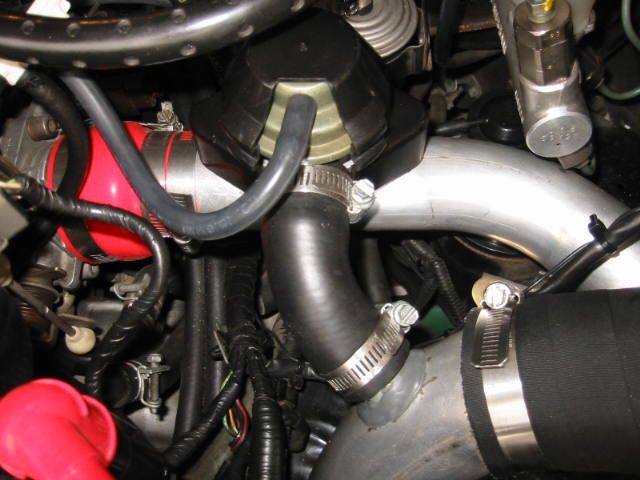Tools: MIG welder, dremel, hacksaw, pliers
Materials: 1.25" id radiator hose 45 degree bend, 2 1" hose clamps, JB Weld epoxy
While shifting gears in a turbo car, the throttle
plate snaps shut as you take your foot off the gas.
This causes all the air that was being pushed
down your intake to suddenly stop and flow back
into the turbo essentially causing it to try
and spin the opposite direction. Not good for the longevity
of your turbo as it causes a lot of wear on
the bearing. You can drive without a valve to vent this
backed up pressure (and even the Honduh GReddy
kit doesn't include it to save $$) but all that
results in is premature wear.
I went ahead and incorporated a compressor
bypass valve into my system soon after installing
the turbo. What this valve does is vent
the charge back into the intake side of the turbo. Not only
does this prevent the air from backing up
but in fact keeps the turbo spinning since the air is rerouted
to the other side of the compressor.
Some people mistakenly compare this to a blow-off valve (BOV)
which just vents the backed up air directly
to the atmosphere. Good for ricey sound effects but
bad for our MAF sensored cars.
The compressor bypass valve
used was one from a '90 Plymouth Laser. I cut the flange off
and welded it to my charge pipe right
before the throttle body. I welded a 1" pipe to accept the
recirculation hose onto the intake pipe.
Now due to my severe lack of welding skills, what I did
was liberally tack weld the flange and pipe
in place and then used epoxy to cover the junctions.
This worked out pretty good. Of course
you could take your piping to a muffler shop and have them
do it the conventional way.
Here is a closeup of the finished pipe.
If you want your epoxied fittings to look nice and clean,
use a wet finger to smooth it out 30 minutes
after applying the epoxy.
